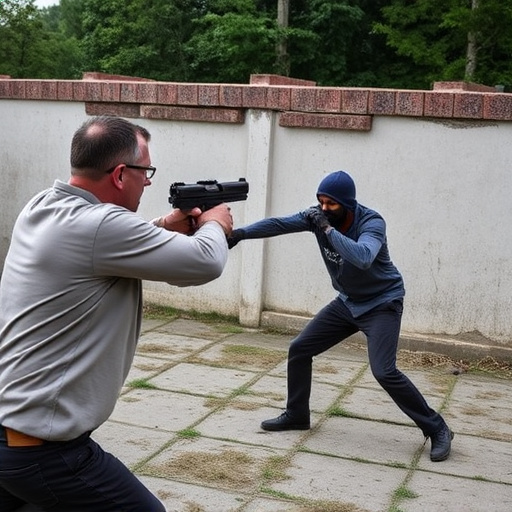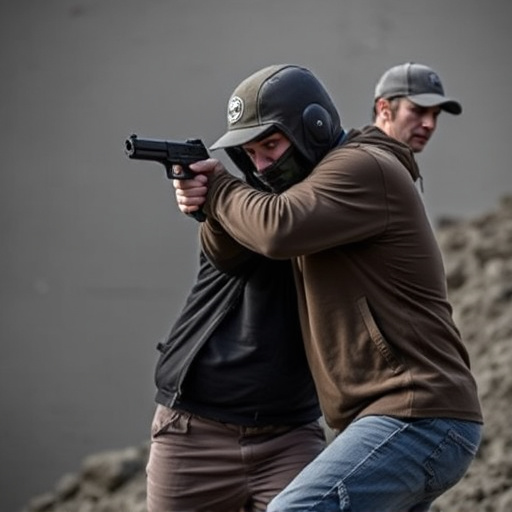Understanding electrical current flow in non-lethal stun guns online is crucial for safety and effectiveness. These devices use lower voltages to temporarily disable, with proper design ensuring broad current distribution across contact points. Analysis of their spread pattern aids manufacturers in optimizing performance for specific uses and enhances weapon development. The growing online market raises ethical concerns regarding consent, bystander impact, and regulation difficulties, emphasizing the need for education and guidelines for safe, ethical stun gun usage.
“Electrical current spread pattern analysis plays a pivotal role in understanding the effectiveness and safety of non-lethal stun guns. This comprehensive guide delves into the intricate world of electrical flow, exploring how these devices operate and their global online sales dynamics. From the technical intricacies of current spread to ethical considerations, we unravel the complex landscape surrounding non-lethal stun guns, providing valuable insights for both professionals and consumers in today’s digital age.”
- Understanding Electrical Current Flow
- Non-Lethal Stun Guns: Mechanism and Safety
- Online Sales & Regulations: A Global Perspective
- Analyzing Spread Patterns: Technical Insights
- Ethical Considerations for Stun Gun Usage
Understanding Electrical Current Flow

Understanding how electrical current flows is paramount in analyzing its spread patterns, especially in non-lethal stun guns available online. Unlike conventional weapons that rely on high voltage to cause severe harm or death, stun guns use low to moderate voltages to disrupt muscle control and immobilize a target temporarily. This difference significantly impacts the current’s behavior and distribution within the body. When a stun gun makes contact with a person, the electrical current flows through the skin and into the body’s conductive pathways, aiming to overload nerve signals. The unique design of stun guns ensures that the current spreads more broadly across the surface area of contact, minimizing the risk of severe internal damage while effectively rendering the target unconscious for a short period.
By studying this flow pattern, researchers and developers can enhance safety measures and improve the effectiveness of non-lethal force tools. This knowledge is crucial in fields where de-escalation techniques are essential, such as police training and self-defense education accessible through online platforms. Understanding electrical current spread allows for better design and application guidelines, ensuring that these devices serve their purpose without causing permanent harm.
Non-Lethal Stun Guns: Mechanism and Safety

Non-lethal stun guns, also known as electronic control devices (ECDs), utilize electrical current to temporarily incapacitate individuals without causing permanent harm. The mechanism behind these weapons involves delivering a powerful electric shock through metal probes or contacts with the target’s body, disrupting muscle control and leading to temporary paralysis. Unlike traditional firearms, non-lethal stun guns are designed to subdue and control subjects rather than inflict fatal injuries.
Safety is a paramount concern when discussing non-lethal stun guns, especially as their online availability has sparked debates. Users must be trained and aware of the device’s limitations and potential risks. Inappropriate use or targeting sensitive areas can result in adverse effects. Proper training ensures that officers or individuals employing these tools understand the optimal distance for deployment, the duration of shocks, and how to monitor the subject’s condition post-incapacitation. Online resources and platforms providing information on stun gun mechanics and safety measures play a vital role in promoting responsible usage.
Online Sales & Regulations: A Global Perspective

The sale and regulation of non-lethal stun guns, often marketed as personal defense devices, have seen significant global variations. In many countries, these devices are readily available for online purchase, a trend that has both advantages and concerns. Online platforms offer consumers convenience, privacy, and a wide selection, but they also present challenges in terms of product regulation and safety standards.
Internationally, regulations differ vastly. Some nations have strict controls on stun guns, restricting their sale to licensed professionals or limiting them to specific regions. Others take a more lenient approach, allowing online sales with minimal restrictions. This discrepancy raises questions about consumer protection and the potential for misuse. With the rise of e-commerce, ensuring that non-lethal stun guns are safely and responsibly distributed globally becomes increasingly complex, requiring international cooperation to establish consistent standards. Additionally, the easy accessibility of these devices online has sparked debates about their role in personal security and the potential impact on public safety.
Analyzing Spread Patterns: Technical Insights

Analyzing the spread pattern of electrical current is a critical aspect when examining non-lethal stun guns. By understanding how and where energy dissipates, manufacturers can optimize design and performance, ensuring safety and effectiveness. Online resources for non-lethal stun guns often highlight these patterns, offering insights into the device’s reach and impact area. This data is crucial for users, enabling them to make informed decisions about the suitable tools for specific situations, whether in law enforcement training or self-defense preparation.
Moreover, spread pattern analysis provides technical advantages in weapon development. It allows engineers to refine stun gun technology, improving accuracy and minimizing off-target effects. This precision is especially relevant when considering the growing market of non-lethal force tools available online, where understanding energy distribution can significantly impact user experience and safety protocols.
Ethical Considerations for Stun Gun Usage

The use of non-lethal stun guns, often marketed and sold online, raises several ethical considerations that require careful attention. These devices, designed to temporarily incapacitate individuals, have sparked debates regarding public safety, consent, and potential misuse. As more people opt to purchase stun guns for personal protection, it becomes imperative to understand the implications of their usage.
Ethical concerns encompass issues like informed consent, especially when using stun guns on vulnerable populations such as children or the elderly. Additionally, the impact on bystanders and public spaces needs scrutiny, particularly in crowded areas where accidental activation could lead to harm. Online sales further complicate matters, making it challenging to regulate and monitor usage. Responsible ownership and handling of non-lethal stun guns necessitate comprehensive education and guidelines to ensure their effectiveness as personal safety tools without causing unintended harm or breaching ethical boundaries.
Electrical current spread pattern analysis is a crucial aspect of understanding and improving the effectiveness and safety of non-lethal stun guns. By delving into the technical insights provided in this article, we can enhance our knowledge of how these devices operate and ensure their responsible use. As the global market for non-lethal stun guns continues to grow, navigating online sales regulations and ethical considerations is essential. Remember that, as technology advances, ongoing research and development in spread pattern analysis will play a pivotal role in making non-lethal stun guns safer and more effective tools for personal protection.
